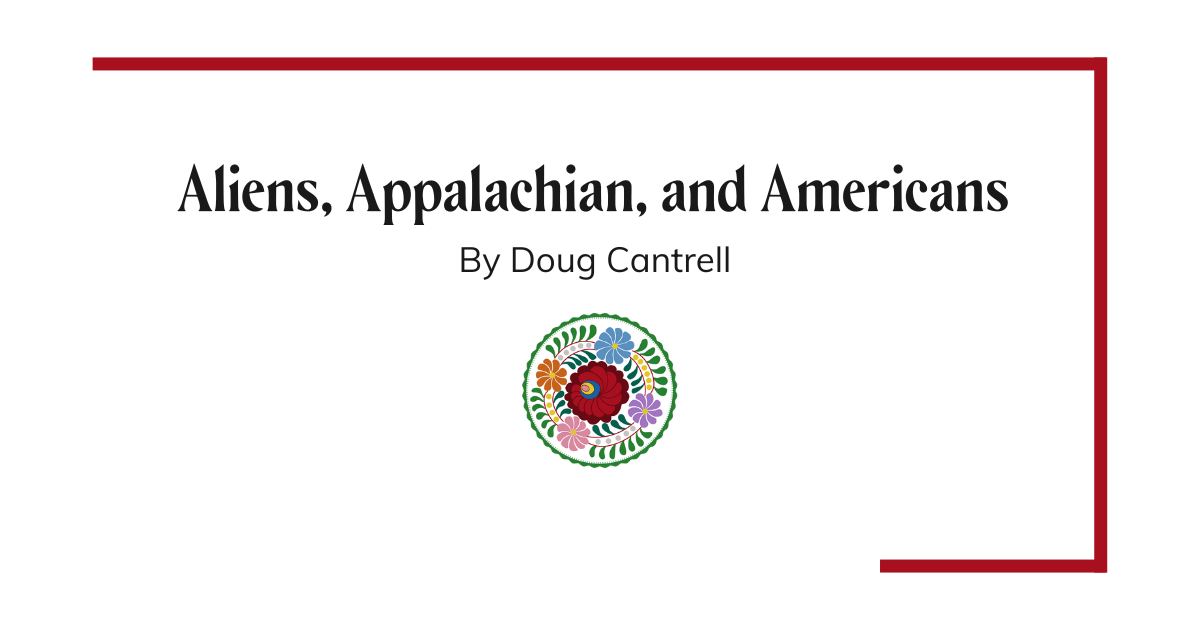written by Professor Doug Cantrell
Millions of immigrants from virtually every country in the world migrated to the United States from about 1880 until 1914 as part of a phenomena historians term the “New Immigration.” Tens of thousands of these immigrants made their way to the Appalachian South where they found employment in coal mines located in the state of West Virginia, the southwestern portion of Virginia, and eastern Kentucky. The two largest ethnic groups that migrated to the Appalachian South were Hungarians and Italians. Practically every coal mining county in southern Appalachia contained immigrants from both Hungary and Italy. These immigrants generally lived in coal camps constructed by operators, some of whom were immigrants themselves, to house workers enticed to the Mountain South to mine coal. Many of these workers thrived working in southern coal mines and made a good living with relatively high wages used to support families. Others did not fare so well and were victimized by coal operator promises of free transportation to the work village, free housing, free food, free medical care, and free tools. After arriving, these immigrants learned that transportation, cost for clothing, tools, housing, medical care, and other necessities needed to mine coal would be withheld from their wages and that it might be several months before they were paid for their work. Some of these new miners understandably quit immediately and migrated elsewhere to find better employment while others stuck it out despite the hardships they faced.
While living in the southern coal camps, Hungarian and other immigrant miners developed new institutions, including the boarding boss and padrone systems, to ease the transition to industrial life in the southern United States. While some of the immigrants left Appalachia after a coal slump in the 1920s and the ensuing Great Depression of the 1930s practically shut down the coal industry, others remained, raised families, married or saw their children and grandchildren wed native mountain people and eventually blended into the general population, contributing their native culture to many cultural traditions present in the Mountain South.
Large numbers of Hungarian immigrants settled in two locations in the Appalachian region. A coal mining camp that was named Pocahontas (after the Indian maiden who saved Captain John Smith’s life in Jamestown in the early 1600s) in Tazewell County, Virginia was built to mine coal and became an early center for Hungarian immigrants in the southern coal fields. This community remained a center for Hungarian immigrants in southwestern Virginia from the 1880s to the 1920s.
Another group of Hungarian immigrants led by Martin Himler, a New York publisher, pack peddler and entrepreneur, created their own coal village in eastern Kentucky. The town these immigrants built was named Himlerville, after Martin Himler, and was the most unique coal camp in the world because it was America’s only venture in cooperative capitalism within the coal industry. Himler established the Himler Coal Corporation, which constructed the village of Himlerville in Martin County, KY, by selling stock through the pages of a Hungarian language newspaper called Magyar Banyaszlap (the Hungarian Miners Journal) that he established for Hungarian coal miners. Himler and his Hungarian compatriots raised and borrowed millions of dollars through the sale of stock to build the town of Himlerville and begin mining operations in Eastern Kentucky, just across the Tug River that separates Kentucky from West Virginia. Every miner who worked for the Himler Coal Company was a stockholder in the company and received dividend payment from the stock when the company was profitable as well as wages earned from coal mining. Within the town, Hungarians dressed in their native costumes, ate native foods prepared in Hungarian restaurants and bakeries within the town, spoke the Hungarian language, and lived as much as possible as they had lived in the old country before migration. Himlerville was a prosperous little Hungary in a corner of impoverished eastern Kentucky. Himler and the Hungarians produced the first commercial electricity in that part of eastern Kentucky and made electricity available to native mountaineers within the region.
After leaving Himlerville, Martin Himler, at the age of 55, divested himself of his business empire and enlisted in the United States Army when the Second World War broke out. Despite his advanced age, Himler endured the rigors of basic training and was assigned to the newly created Office of Strategic Security (OSS), the predecessor of the modern-day Central Intelligence Agency (CIA). He quickly rose to the rank of colonel and served in North Africa, Italy, and after the war ended, was sent to his native Hungary where he interrogated Nazi war criminals and decided whether they would be charged and tried for war crimes. Himler, whose family was Jewish, held the fate in his hands of some of the same Hungarian Nazis who had remanded most of his Hungarian family (brothers, sisters, nieces, nephews, uncles, cousins, etc.) to the Holocaust death camps. Despite being able to decide whether the same people who had sentenced his family members to death during the Holocaust, Himler said he “did not like the idea of playing God” with these Nazis. Himler was discharged from the OSS and moved to southern California where he live until the early 1960s, supporting himself as a free-lance journalists. Himler and the thousands of Hungarians who lived in the southern coal camps were vital to America’s effort to win World War II.
To read more about Martin Himler, you can purchase The Making of an American: The Autobiography of a Hungarian Immigrant, Appalachian Entrepreneur, and OSS Officer from The Hungarian Store, CLICK HERE.
To support the work of the Martin County, Kentucky Historical and Genealogical Society and their efforts to restore the Martin Himler home in Kentucky through the purchase of their cookbook, CLICK HERE.
Doug Cantrell is a professor of history in the Kentucky Community and Technical College System, which has over 100,000 students enrolled on 16 campuses. Professor Cantrell teaches at the Elizabethtown, Kentucky campus where he has taught since 1987. He holds degrees in history and political science from Berea College and advanced degrees from the University of Kentucky and is considered the foremost expert on immigrants in the Appalachian coal industry. Professor Cantrell has authored, co-authored, edited, or contributed to 14 books, written articles about immigration for both the Encyclopedia of Appalachia and the Kentucky Encyclopedia, and contributed articles and book reviews about immigrants in southern Appalachia to several academic journals. He most recently worked with Cathy Corbin to prepare Martin Himler’s autobiography, titled The Making of an American: The Autobiography of a Hungarian Immigrant, Appalachian Entrepreneur, and OSS Officer published by the University of Tennessee Press in 2018. He currently resides in Elizabethtown, Kentucky with his wife and 13-year-old cat, Sabrina and is working on a book about immigrants in the coalfields of the Appalachian South tentatively titled, Aliens, Appalachian, and Americans: Immigrants in the Coalfields of West Virginia, Southwestern Virginia, and Eastern Kentucky, 1860-1960. Professor Cantrell is also working with the Martin County, Kentucky Historical and Genealogical Society to raise funds to restore Martin Himler’s house at Himlerville, Kentucky to publicize Himler’s story and hopefully draw tourists to an impoverished region in eastern Kentucky.









